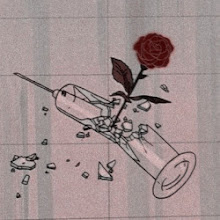Following various famous lesbians during the nineteenth century as they try to capture the essence of Sappho, the Greek poet who proudly professed her love for other women, After Sappho is a series of vignettes showing both the hardship and beauty in the lives of these women -- from Romaine Brooks, the painter known for her shades of gray, to Natalie Barney, an American writer who created a literary salon in Paris that became the center of the era's lesbian community. Struggling against the crushing boot of male oppression, these women nevertheless rose to great heights, and have a special place not only in the memory of women and lesbians, but the rest of the world, too.
First and foremost, I want to applaud Schwartz's creativity. The imaginativeness of this novel is perhaps its strongest feature -- it wouldn't be quite right to say it's totally unique (as I believe Saidiya Hartman has a similar approach), but it certainly is something you don't encounter often. It's a fascinating interplay between reality and the imagination, and Schwartz's poetic, lyrical style of writing further adds to the dreamy sensation of reading it. Even in this day and age, where there is much more freedom in the exploration of gender and sexuality, many young lesbians will relate to the fervent desire of these women to explore a shared history, a connected past. It's not lost on me that while these women were reading tomes about Sappho, translating her poems from their original Greek, we are reading about them as they were doing it.
Many of the women included here are well-known, and have had much written about them. Virginia Woolf, for example, is featured heavily here, as is her lover, Vita Sackville-West, as is Natalie Barney, Romaine Brooks, Radclyffe Hall, Sarah Bernhardt, and many others. It would be remiss not to include them in some capacity, anyway -- they are responsible for influencing modern art and literature in so many ways, not to mention the lesbian community. There are a few others that I hadn't heard of previously, namely Sibilla Aleramo, one of the first openly feminist writers in Italy, as well as Lina Poletti, one of the first women to declare herself a lesbian in Italy. My only major complaint here is that, in some ways, I wish Schwartz had focused on lesser known lives. We have a wealth of information already on these women; wouldn't some of the ones we know less about have been particularly exciting to expand upon?
Josephine Baker and Ada "Bricktop" Smith are also briefly mentioned, but there's barely any time given to them at all. It made me question, speaking truthfully, why they were included at all. It felt as if they were namedropped, and that was it. I do understand, to some degree, why this is: Schwartz is focusing specifically on the set of women who are slightly interwoven with one another during this period, but still, what was the point of very briefly mentioning Ada and Josephine just to completely leave them out later?
As a whole, the book suffers from a sense of being somewhat disjointed. Because of the stylistic choice Schwartz makes, none of these women ever feel truly fleshed out, and the brevity of each section leaves you wishing that a bit more time had been spent on them.
All in all, I don't think that this is a completely successful venture, but I do applaud Schwartz's creativity and ambition. I'll be interested to see what her next novel holds!


No comments:
Post a Comment